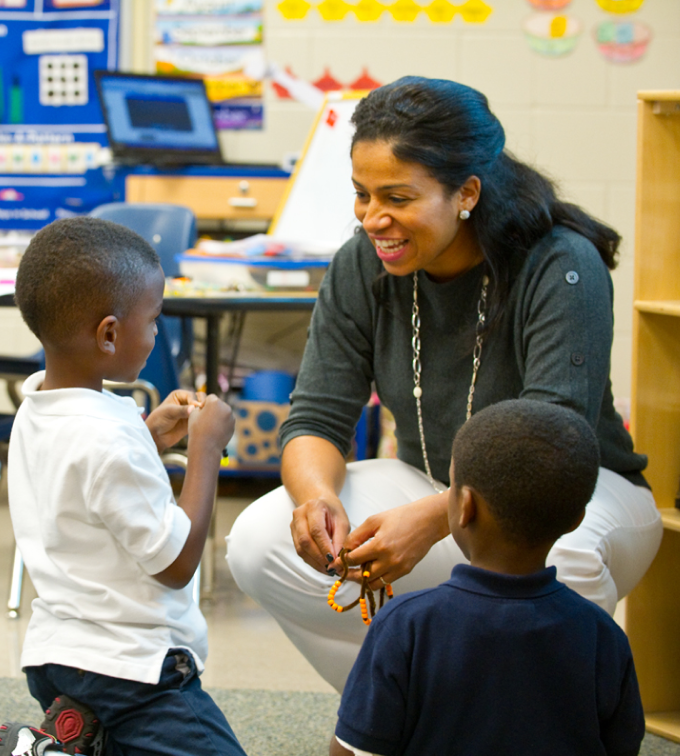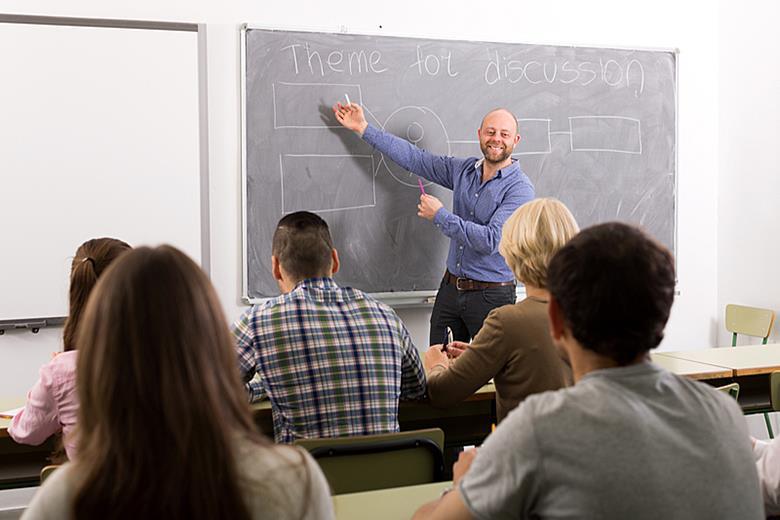Improve Your Child’s Performance with Primary Science Tuition Singapore
Improve Your Child’s Performance with Primary Science Tuition Singapore
Blog Article
A Comprehensive Overview to the Various Knowing Approaches in Key Science Direction
The expedition of varied learning techniques in key scientific research direction provides a possibility for teachers to enhance student engagement and comprehension considerably. By examining hands-on knowing strategies, inquiry-based techniques, and collective approaches, we can recognize effective techniques that deal with various discovering styles. In addition, the integration of modern technology and distinguished instruction plays an essential duty in cultivating a comprehensive setting. The inquiry remains: just how can these techniques be efficiently implemented in the class to optimize their impact? The response hinges on a better analysis of each method and its ramifications for teaching science.

Hands-On Understanding Techniques
Hands-on learning strategies play a crucial duty in primary science instruction, engaging students in active exploration and testing. These techniques allow students to interact directly with phenomena and products, promoting a deeper understanding of clinical principles. By utilizing manipulatives, designs, and real-life experiments, instructors produce an environment where trainees can observe, hypothesize, and evaluate their ideas.
Such methods not just improve comprehension however also cultivate vital thinking and analytic abilities. When students take part in activities like developing basic equipments, growing seeds, or performing chain reactions, they are motivated to ask questions and seek answers with their own monitorings. This experiential approach helps to demystify complex clinical concepts, making them a lot more relatable and obtainable.
In addition, hands-on learning promotes partnership among peers, as students typically operate in teams to perform experiments or share findings. This synergy not just enhances their discovering experience however also develops necessary social skills. Eventually, incorporating hands-on methods in primary scientific research instruction cultivates a long-lasting love of learning and curiosity regarding the environment, laying a strong structure for future scholastic searches in scientific research and past.
Inquiry-Based Knowing
Inquiry-based knowing is an educational approach that encourages trainees to ask questions, investigate sensations, and build their own understanding of scientific concepts. This approach moves the emphasis from conventional teacher-led guideline to a much more student-centered experience, where students take the initiative in their educational trip. By promoting interest, inquiry-based knowing promotes deeper engagement with the material, permitting pupils to explore topics in a purposeful context.
In technique, this method usually includes hands-on experiments, monitorings, and crucial thinking activities that align very closely with the scientific approach. Pupils are encouraged to create theories, layout examinations, and examine information, which cultivates necessary abilities such as analytical and analytical reasoning. The function of the instructor in this structure is to promote expedition, assisting trainees through the query process while encouraging independent thought and partnership.
Moreover, inquiry-based understanding nurtures a feeling of possession over the knowing procedure, encouraging pupils to pursue understanding actively. This approach not just enhances understanding of scientific concepts yet also promotes a lifelong love for discovering, outfitting pupils with the skills essential to browse a significantly intricate globe.
Collaborative Learning Approaches
Joint discovering methods equip pupils to take part in purposeful interactions with peers, cultivating a common obligation for their instructional results. In main science instruction, these techniques encourage students to function with each other to explore clinical ideas, resolve problems, and carry out experiments (primary science tuition Singapore). By taking part in group tasks, trainees can leverage varied viewpoints, enabling richer understanding and retention of clinical knowledge
One key facet of collaborative knowing is the emphasis on communication abilities. Pupils have to verbalize their thoughts, listen actively to others, and discuss concepts, all of which are vital competencies in both real-world and scholastic contexts. This social interaction not only improves their understanding of scientific concepts yet likewise promotes teamwork and dispute resolution abilities.
Furthermore, collective understanding often results in boosted motivation and engagement. When students see the worth of their contributions within a team, they are more probable to take possession of their knowing trip. Educators can promote this process by site here making organized team tasks that line up with curriculum objectives while supplying support on effective collaboration techniques. In general, including collective knowing strategies in primary scientific research instruction grows a vibrant learning setting that prepares students for future scholastic and social challenges.
Technology Combination in Science
The assimilation of innovation in main science guideline enhances finding out experiences by offering cutting-edge devices and sources that sustain numerous teaching methods, including joint discovering - primary science tuition Singapore. Making use of electronic systems, simulations, and interactive applications enables trainees to involve deeply with clinical principles, facilitating a more hands-on method to learning
Digital research laboratories, for instance, enable students to perform experiments safely and efficiently, advertising inquiry-based understanding. These devices can imitate real-world clinical circumstances, permitting pupils to picture complicated procedures that would be tough to reproduce in a conventional classroom setup. In addition, modern technology promotes interaction and collaboration amongst students, as they can share findings and interact on tasks via online platforms.
Additionally, multimedia presentations and academic video clips can enhance lessons by accommodating diverse understanding styles, making abstract principles much more available. Data evaluation tools additionally equip pupils to gather and analyze scientific information, reinforcing vital believing skills. On the whole, the strategic incorporation of modern technology in key scientific research guideline not just enhances involvement yet also prepares pupils for a technically advanced culture, furnishing them with essential abilities for future scientific ventures.
Separated Guideline Approaches
Differentiated guideline approaches are crucial for addressing the varied needs of learners in key science education and learning. These methods allow teachers to customize their training approaches to accommodate differing capabilities, rate of interests, and discovering styles within the classroom. By using differentiated direction, educators can develop a comprehensive atmosphere that cultivates engagement and boosts understanding of clinical concepts.
One effective method is to use adaptable grouping, which permits students to team up with peers at comparable skill degrees or with differing perspectives. This technique motivates peer knowing and promotes vital thinking. In addition, offering choices in projects can equip pupils, permitting them to pick tasks that reverberate with their passions while still meeting curricular objectives.
Furthermore, including tiered projects is an additional important strategy. By developing tasks with varying levels of intricacy, educators can guarantee that all pupils are properly tested, regardless of their effectiveness. Utilizing developmental evaluations to gauge comprehending additional allows teachers to adjust their training methods dynamically, making sure that each student receives the assistance they need.
Ultimately, applying differentiated instruction approaches in main science education not only improves pupil discovering end results yet also cultivates an enthusiasm for you could try here science, preparing students for future academic searches.

Conclusion
In summary, effective primary scientific research direction requires a multifaceted strategy that includes hands-on learning, inquiry-based approaches, and collective strategies. The combination of innovation and differentiated guideline better provides to varied understanding designs, cultivating an environment favorable to exploration and crucial thinking.
The exploration of varied discovering approaches in main science direction presents a possibility for instructors to improve pupil engagement and understanding substantially.Hands-on knowing strategies play a critical role in main science guideline, engaging trainees in active expedition and trial and error.Inquiry-based knowing is an educational strategy that motivates my explanation pupils to ask concerns, explore sensations, and build their very own understanding of clinical principles.Collaborative discovering techniques empower pupils to involve in significant communications with peers, cultivating a common duty for their instructional results. On the whole, integrating joint understanding approaches in main scientific research direction cultivates a dynamic learning atmosphere that prepares pupils for future academic and social challenges.
Report this page